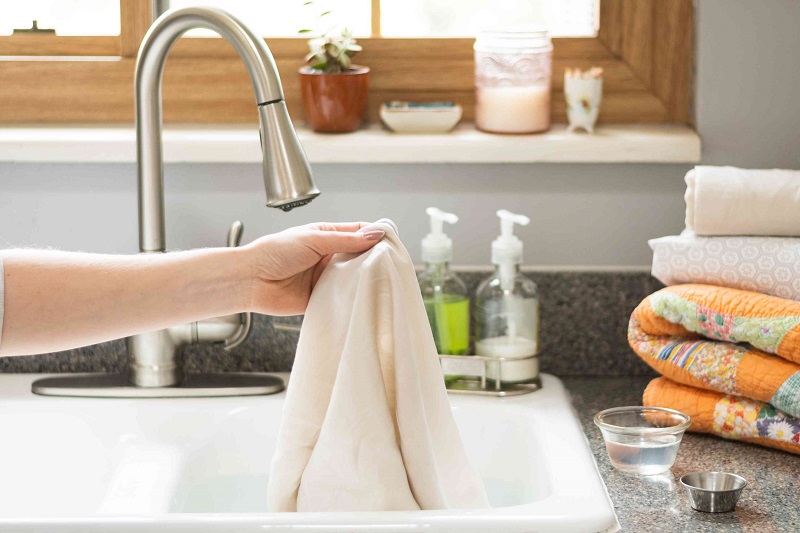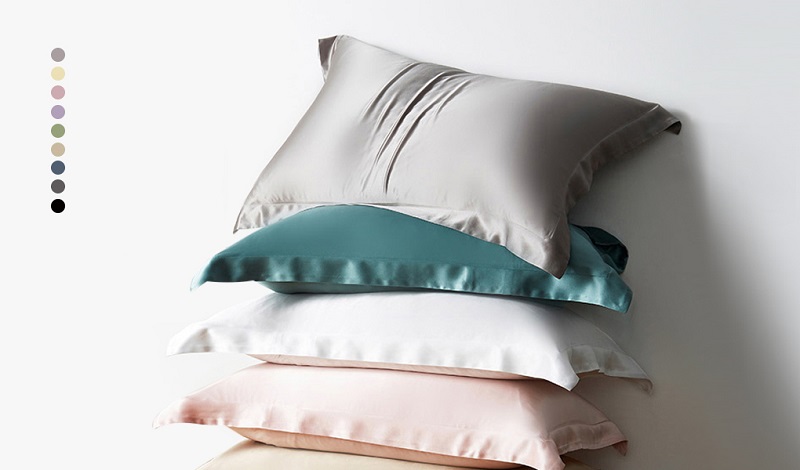You have to learn how to clean pillowcases in two steps. This is important because some pillows like Tempurpedic’s are not washable. There are also pillow materials that you can’t get wet, so you can only keep pillows clean by using washable pillowcases.
While sun exposure, drying, or vacuuming can quickly clean pillowcases, there are some practices to thoroughly sanitize them. The guide below will prevent them from being dirty and you can also retrieve the pillowcases with stains and odors. You can also choose to wash them by hand or use the washing machine.
How to clean pillowcases by washing
Step 1. Prepare and treat
Check tags
You want to prepare the materials and pillowcases before starting the wash. Remember that pillowcases can use different fabrics, so you need to familiarize yourself with the proper cleaning tips for them. Also, you need to check the manufacturer’s label if the pillowcase can be washed in the first place.
Remove the stain
After you separate the pillowcase from the pillow, you can pre-treat it first to remove stains and discoloration. This cover acts as a cushion barrier, so it’s no surprise that it has various residues. You can use a stain remover and work the bleaches with a brush or even a little liquid soap with vinegar.
Soak and deodorize
Next, fill a tub with warm water, baking soda, and a mild detergent to make sure the fibers are clean. This will also deodorize the material, especially when the pillowcase needs a deep cleaning. Rub the fabric on itself and check the surfaces if you have scrubbed them thoroughly.
Step 2. Wash and dry
After scrubbing and deodorizing the pillowcase, soak it in another sink of water overnight or less until the water runs clear. Depending on the manufacturer’s recommendations, you can continue washing the pillowcase in the washing machine on a gentle cycle with a mild detergent. This will remove the detergent residues and leftovers on the material.
Dry completely
If your pillowcase is not machine washable, you can wash it by hand. Then, rinse the material thoroughly until it is free of soap residue. To dry, you can air it outside or somewhere with good air circulation.
Otherwise, use the dryer according to the pillowcase label. Keep in mind that using gentle settings and detergents is the safest way to wash and keep your pillowcases clean. In some cases, the material can handle hot water, normal detergent, and a typical dryer setting.
What are the yellow stains on my pillowcase?
You may be wondering why washing pillowcases requires pretreatment, as discussed in step one. Whether you notice a handful of stains or not, this procedure will ensure that the pillowcase material is thoroughly cleaned. This will also fix those stubborn yellow spots on the fabric.
Remember that pillowcases are exposed to moisture, sweat, oils, and saliva every night. Coarse as it may sound, they can cause yellow spots that are difficult to remove. However, daily wear and direct sunlight can also cause discoloration.
How to clean a silk pillowcase
Not everyone likes to use cotton or polyester materials for the pillowcase. A more luxurious and skin-friendly option is a silk pillowcase, but people often overlook it because it is more difficult to clean. However, you can always wash gently by hand to prevent the fibers from being damaged.
If there are stains, use your fingers and apply detergent to the material. Leave it to soak for 15 minutes and you can wash the silk pillowcase without wringing or twisting. Use cold water throughout the process and skip using harsh cleaners like bleach.
Rinse the fabric thoroughly and dry the silk outside on a sunny day. Air drying is the best way to dry silk as heat can damage the material. If not, quickly use the gentlest, heat-free dryer setting and finish the drying process in a ventilated place.
How to keep pillowcases clean
You can do simple practices to prevent dirt from returning to the pillowcases. For example, you want to make sure that the laundry you’re using is also cleaned well regularly using oxygenated bleach to remove residue and discourage stains. And as for the pillowcase, never use fabric softeners or dryer sheets because they promote the accumulation of oils.
Your pillowcases will also benefit if you change them weekly. This way, you reduce the build-up of dirt, grime, and other nasty substances on the fibers. Showering every night before bed is also a simple but effective practice for reducing dirt, sweat, make-up, oils, or pillowcase hair products.
Conclusion
The pillowcase ensures that our pillow is well protected from dirt, oils, and other unsightly things that can build up over time. Therefore, learning to clean pillowcases must ensure good hygiene and help our pillows last longer. The best way to do this is to wash the materials.
Start by pre-treating the stains with a brush and liquid soap, then soak the fabric in hot water, baking soda, and detergent to deodorize and remove residue. After this initial preparation, you can place the pillowcase in the washing machine following the instructions on the label.
Once done, you can use the dryer or place the pillowcase outside to dry it completely. To keep pillowcases fresh, try to replace them weekly and always shower before bed. This reduces the accumulation of dirt and grime for easier cleaning.



